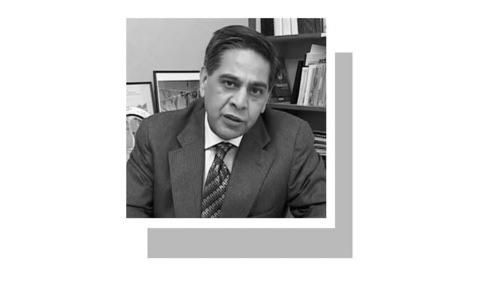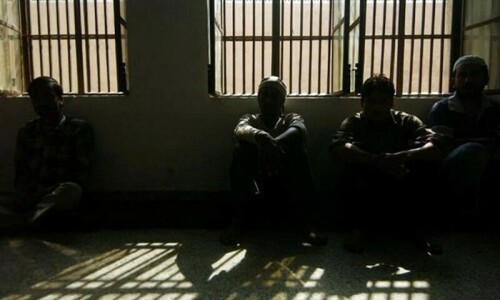The demand for new autonomous provinces in the under-developed regions underserved by governments and economic agents alike crops up from time to time because the markets are creating social exclusion, governments are cash-starved and much of the scarce resources are appropriated by the powerful. People in those parts of the countryside which are under the sway of powerful landed gentry and tribal sardars suffer from the lack of opportunity to improve their livelihood. It results in large-scale migration from rural areas to overcrowded cities hit by inadequate civic facilities and expanding slums.
And the centralisation of authority and resources at the provincial capitals with weak, controlled local bodies has also provided an impetus to the struggle for separate provinces on economic, administrative and ethnic grounds. Finally, the movement for provincial autonomy has drawn inspiration from the 1940 Pakistan resolution stipulating vibrant federal democracy.
Currently, it is the creation of a province in South Punjab that is under national debate and focus. Foreign Minister Shah Mehmood Qureshi argues: the creation of a province is the right of the people of South Punjab and it is also necessary for fair distribution of resources and administrative reasons. From the 1970s to 2019, South Punjab has not been receiving its due share of the country’s resources. Development schemes for the region were diverted to other districts. And according to recent data, poverty is high in the region. People have to travel long distances to reach Lahore to get their problems resolved.
The creation of a Seraiki province has been a long unfulfilled demand of the region
It may be recalled that the creation of a Saraiki province has been a long unfilled demand of the region. The PTI government is seeking political consensus for the creation of a South Punjab province to honour its manifesto as it does not enjoy a two-thirds majority in parliament. Mr Qureshi, who represents a party with the most vocal adversarial stance towards its rivals, has advised opposition parties that instead of making statements for political point-scoring, they should support the government for the creation of the new province. He alleged that the previous PML-government had a two-thirds majority in the National Assembly but the creation of a new province was not on its agenda.
Responding to the criticism, PML-N Secretary General Ahsan Iqbal said if the government is doing anything contrary to Punjab Assembly resolution, it means it is playing a game and deceiving people. He reminded the PTI government that the National Assembly could legislate on the creation of a new province only after a resolution was passed by the relevant provincial assembly. The PML-N leader said his party offers unconditional support to the government on the creation of two provinces-South Punjab and Bahawalpur — if the legislation is done as per the resolution passed by the Punjab Assembly. He recalled that the PML-N had tabled a resolution in the National Assembly for creation of two provinces over a year ago.
For PTI, getting an amendment to the earlier resolution passed by the Punjab Assembly may be difficult as its most important ally, PML-Q holds the same views as that of PML-N. The voice of developed Central Punjab may not be easy to ignore.
However, before making a bid for a consensus, PTI has resolved its internal differences on the location of the capital of the new province. It was considered prudent that the issue is left for the newly elected South Punjab Assembly to decide.
There are relatively subdued voices for the creation of other new provinces. In Sindh, the situation is somewhat different. An urban middle-class party, MQM-P, which represents Urdu-speaking Sindhis — an ethnic minority — also want a province. However, it is essentially a struggle for empowered, autonomous local self- government for developed cities suffering by mounting civic problems. In developed economies, more and more autonomy is granted to municipal bodies for urban renewal as the cities get bigger and face a more complex situation. The migration of rural labour from other parts of the country, particularly South Punjab, to cities like Karachi continues unabated.
No doubt ethnic divide in Sindh is a snag in the provincial socio-economic development with rural hinterland suffering from stark poverty. The remedy lies in democratic federalism. Whatever can be managed at the district level should remain outside the sub-federation’s jurisdiction and whatever can be managed at the provincial level should be kept outside the federal domain. And whatever rights the majority exercises or seeks for itself it must recognise and extend the same rights to the ethnic, cultural and religious minorities without discrimination. And finally, there should be a system of mutual accountability among the three tiers of governments.
Autonomy emerged as a central national issue soon after the creation of Pakistan. In 1955, the modest autonomy inherited by the provinces from the British rule was wiped out by the imposition of One-Unit and the principle of parity. Former president General Agha Mohammad Yahya dismantled One-Unit and the provinces were restored. For the first time in Baluchistan’s history, a provincial legislature came into being. By merging as well as the creation of new ones, with the process starting in the 1950s, the Indian Union now has 29 states (provinces).
The 1973 Constitution, according to its architect, gave a fundamental framework based on Islam, democracy and autonomy. The course set by it facilitated approval of the historic 18th amendment and the 7th National Finance Commission (NFC) award by the parliament. That gave meaningful fiscal, legislative and administrative autonomy to the existing provinces. However, the duplication of functions and the non-implementation of some of the provisions of the 7th NFC award remains a bone of contention between the provinces and the federation. The cash-strapped PTI-led federal government now plans to transfer departments not falling in its own legitimate domain to the provinces from July 1.
Earlier in 2009, the Gilgit-Baltistan Empowerment and Self-governance Order was promulgated that granted de-facto powers embedded in the province-like status to the region without being part of Pakistan. This has been followed by the recent merger of the federally administered tribal area with Khyber Pakhtunkhwa province. Azad Kashmir enjoys the status of an autonomous state.
Currently, the struggle for a south Punjab province continues unabated, awaiting a political consensus to get resolved.
Published in Dawn, The Business and Finance Weekly, March 23rd, 2020
















































